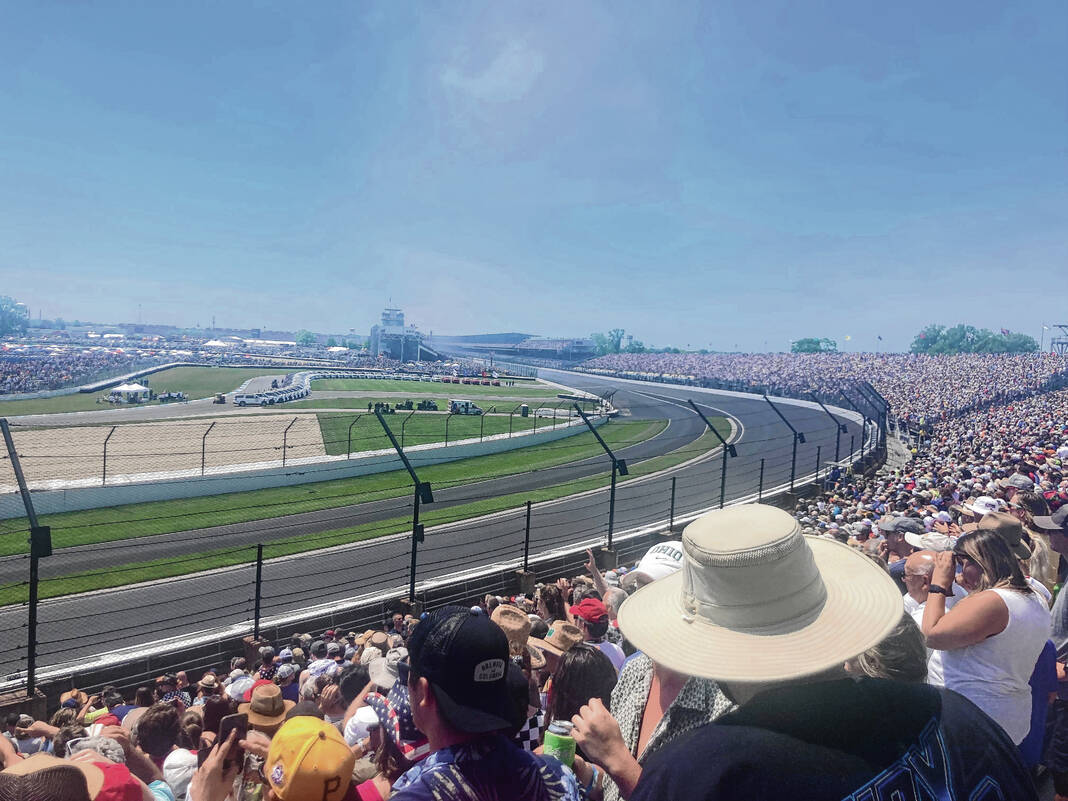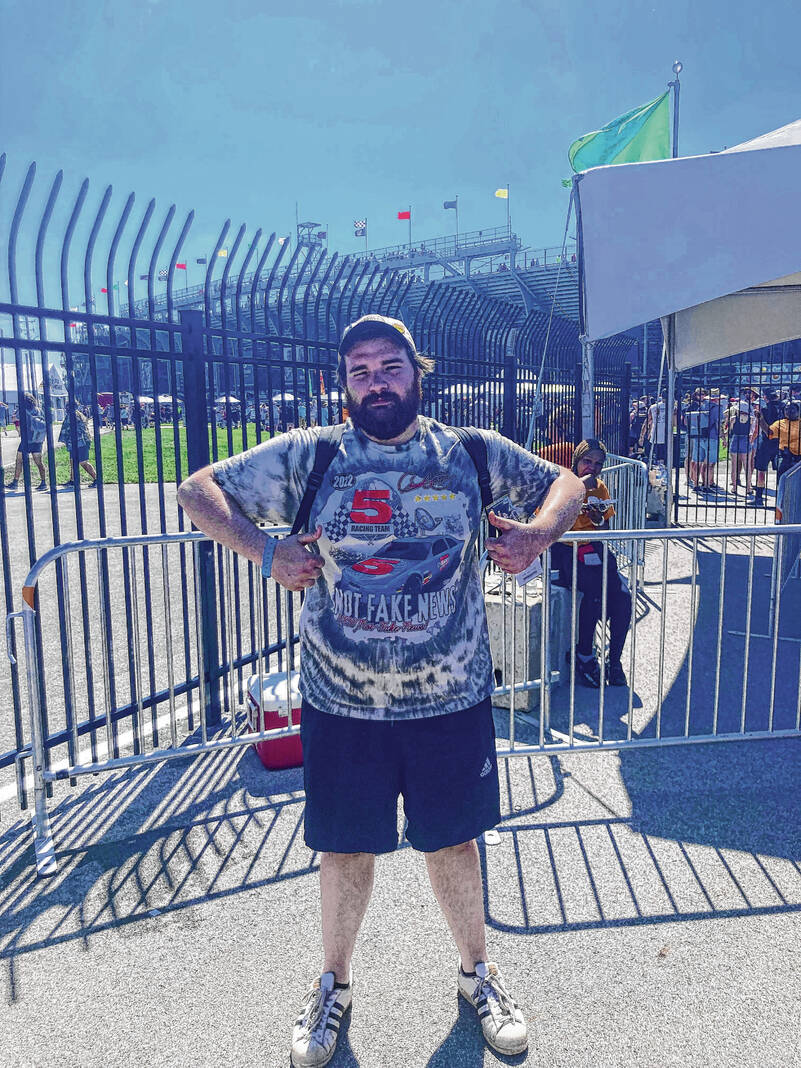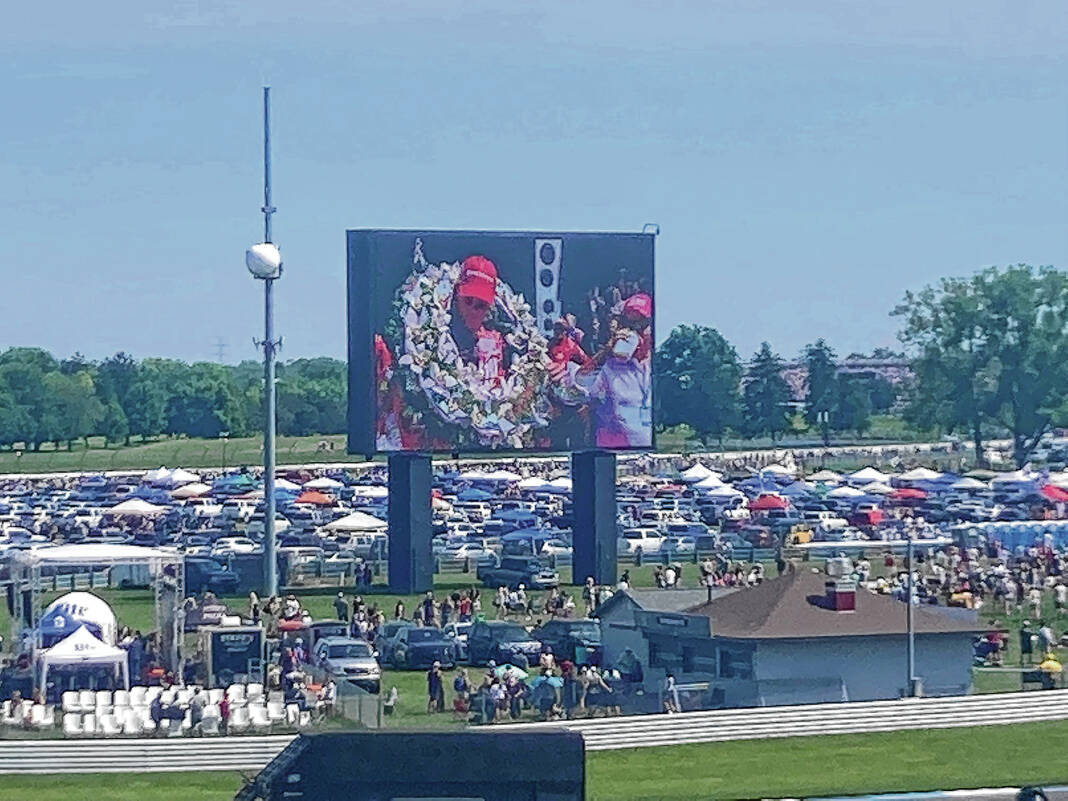Is there a better time to be a Hoosier than the last weekend in May?
The weather is warm, school is over for many and 325,000 people descend into Indianapolis Motor Speedway to witness who will be the next winner of The Greatest Spectacle in Racing.
Last year, I attended the Indianapolis 500 on a whim and walked out with a newfound appreciation for the sport and my home state.
I went to the IMS campgrounds to enjoy time with my fiancée’s family, and when the opportunity came up to see the race, I thought of a question I think of when new opportunities come up: What do I have better to do?
I expected a rip-roaring sporting event, which it was, and ultimately ended up being moved by the celebration of Indiana tradition and motorsports.
Between the singalong of “(Back Home Again in) Indiana,” the U.S. Air Force Thunderbirds flying over the speedway and the race victor kissing bricks and drinking milk, it’s hard not to feel a part of something special when you’re at the race.
The 2021 race was made even more special after Helio Castroneves won his fourth Indianapolis 500. There is something so endearing to hear a Brazilian man shout on the mic that he loves Indianapolis, climb the fence like your favorite Spider-Man and weep next to his wife and daughter during his victory lap.
Only 40 percent of the speedway’s full capacity was filled last year, and it still felt like overwhelming to take in a race that 135,000 neighbors from all over the world are watching in the same hollowed ground.
Watching the race in full capacity made the experience more communal to say the least, and I have never navigated my way over the potholes of Indianapolis like I did for an hour after the race before getting on the interstate, but I got to watch the fastest cars in the world race on the fastest possible track and feel all of the sights and sounds in person.
That is simply an indescribable adrenaline-pumping feeling that every Indiana native should experience.
This year, all in-field activities were open, including the Snake Pit, a daylong music festival that takes place during the race and in the morning before that mainly had electronic dance music acts in recent years.
I sat in Turn 4 and had a good sight of the Snake Pit stage and could see the throngs of dance music fans jumping up and down. The sound was loud enough that I could follow along with the bass thumps after the cars roared past.
The music of the Snake Pit is so fitting to have during the race because it has the same energy level as there is when watching IndyCars. Everything is so loud, exciting and boisterous that it’s hard to look away.
While there are traditions that are decades old associated with the race, it seems like electronic music is becoming a tradition for a younger generation.
On top of the Snake Pit, “One More Time” by Daft Punk played after Castroneves won last year, and “Aerodynamic” by the same group off of the same album, 2001’s Discovery, played not long after Swede Marcus Ericsson won the race.
Ericsson was able to keep his lead during a race restart after Jimmie Johnson wrecked with six laps to go and race officials decided to call a red flag to presumably not have the race end with a safety car out.
The race itself was as exciting as its ending.
Scott Dixon, this year’s pole sitter and the fastest one in Indianapolis 500 history, absolutely commanded the first three-quarters of the race and set a record for the most laps lead (95) during the race’s history.
At Lap 144, I was convinced Dixon had the race in the bag. He was driving exactly how he should drive to win a race as fast as the 500.
Every time he got passed, he would simply gain his lead back within a couple of laps. He had a lucky pit stop where he fueled up right before a yellow flag was called after a wreck and a pit stop that cost him the race.
On Lap 175, he drove too fast in the pit lane and was penalized hard enough that it took him out of contention for this year’s Borg-Warner Trophy. Dixon finished 21st.
Castroneves had an admirable finish. He had an uphill battle after being 27th on the starting grid and finished seventh. As hopeful people were that he would be the first five-time winner this year, I was doubtful he would be able to win from so far back in the pack.
His finish this year proved he’s more on the cusp of being the winningest driver of the 111-year-old race than I had believed.
Like the unfavorable Rich Strike winning this year’s Kentucky Derby, the Indianapolis 500 isn’t easily predicted, and that makes it all more exciting.
Whether it’s taking in traditions or seeing who’s in front when the checkered flag is waved, Hoosiers can have more pride in the land they live in and might have a new interest in fast cars if they can make it out to Speedway at the end of May.



